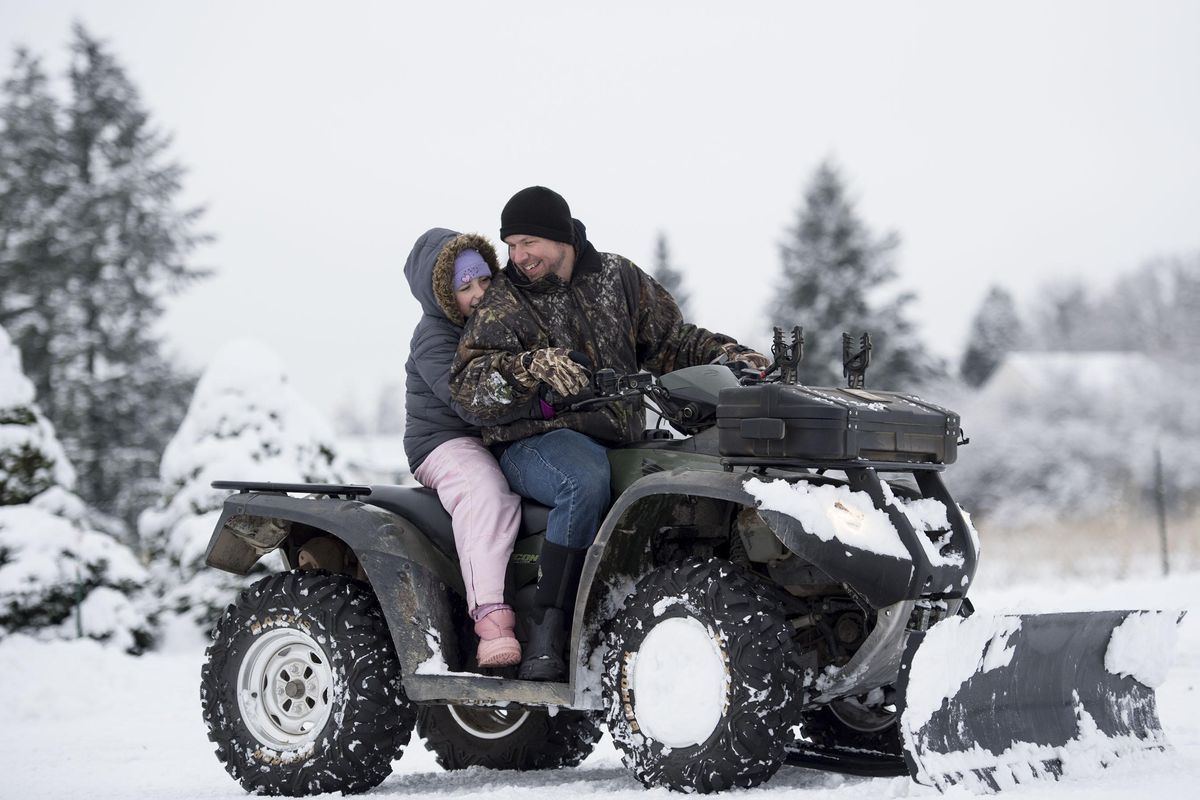Crews hurry to get snow, slush plowed before arctic deep freeze arrives

Road crews across the Inland Northwest were hurrying Monday to get roadways cleared before a new blast of arctic cold arrives over the region.
Lows by Tuesday night could reach low single digits with highs struggling to get to the teens on Tuesday and Wednesday. Light northerly winds are possible in the Spokane region, but winds to 15 mph are expected in the Sandpoint area by Wednesday.
A risk of more snow returns Wednesday night and Thursday, followed by a renewed blast of arctic air starting Friday, forecasters said.
Several inches of fresh powder are possible to the south of the Spokane region and in the mountains. Some snow is likely to fall in Spokane, Post Falls and Coeur d’Alene.
Crews have made good progress since Saturday morning when nearly 6 inches of snow lay on the ground.
With moderating temperatures on Sunday and Monday and several hours of sunshine, much of the snow on roads was starting to melt and clear.
But numerous areas were in danger of having the slush and water turn to treacherous ice.
Once the freeze hardens, “It’s almost like trying to plow a glacier,” said Martha Lou Wheatley-Billeter at Spokane County.
Crews have newer types of de-icers that can melt snow down to zero degrees to help, she said.
County crews were applying a mix of sand and dry de-icer in icy spots, she said.
Spokane Valley crews made their way across major thoroughfares and were concentrating on remaining arterials and hilly residential areas. A full residential plow is undertaken in Spokane Valley only when conditions warrant it.
In Coeur d’Alene, crews worked 12-hour shifts over the weekend and plowed all streets, including residential areas, within the city’s goal of getting the work done in 30 hours.
Crews were starting a second plowing of all streets in Coeur d’Alene on Monday.
In Post Falls, crews were expected to finish plowing streets by noon Sunday.
In a related development, the Climate Prediction Center on Monday confirmed that a La Nina cooling of water in the tropical Pacific Ocean is in place. The cooling was first noticed in July.
It may be part of the reason the Pacific Northwest is experiencing a hard early winter. La Ninas are associated with more snow and cold in the Inland Northwest.
So far this month, Spokane International Airport has recorded 5.7 inches of snow, for a total of 9 inches so far this season.
While November was unusually mild at 7.8 degrees above normal, December has reversed the trend and has been 2.4 degrees below normal through Sunday.
Mountain snowpack has been building quickly.
Mt. Spokane Ski & Snowboard Park reported 8.5 inches of fresh snow over the weekend with 35 inches of snow at the summit.
Schweitzer Mountain Resort had 9 inches of new snow with 44 inches on top and 24 inches on the lower slopes.
Lookout Pass had 44 inches of new snow over the weekend with 84 inches now piled up at the summit of the ski area.
Silver Mountain Resort had 22 inches of new snow over the weekend with a total of 40 inches at Kellogg Peak.
49 Degrees North resort had only about 5 inches of new snow, but is reporting a summit depth of 36 inches.
Mountain passes in Washington and Idaho were open on Monday with various amounts of snow, ice, slush and water on the pavement.
On Snoqualmie Pass over the Cascades on Interstate 90, chains were required on vehicles weighing 10,000 pounds or more.
Chains were required on Stevens Pass on U.S. Highway 2 for vehicles without all-wheel drive.
Lookout Pass in North Idaho was icy, but Fourth of July Pass was wet by Monday afternoon.